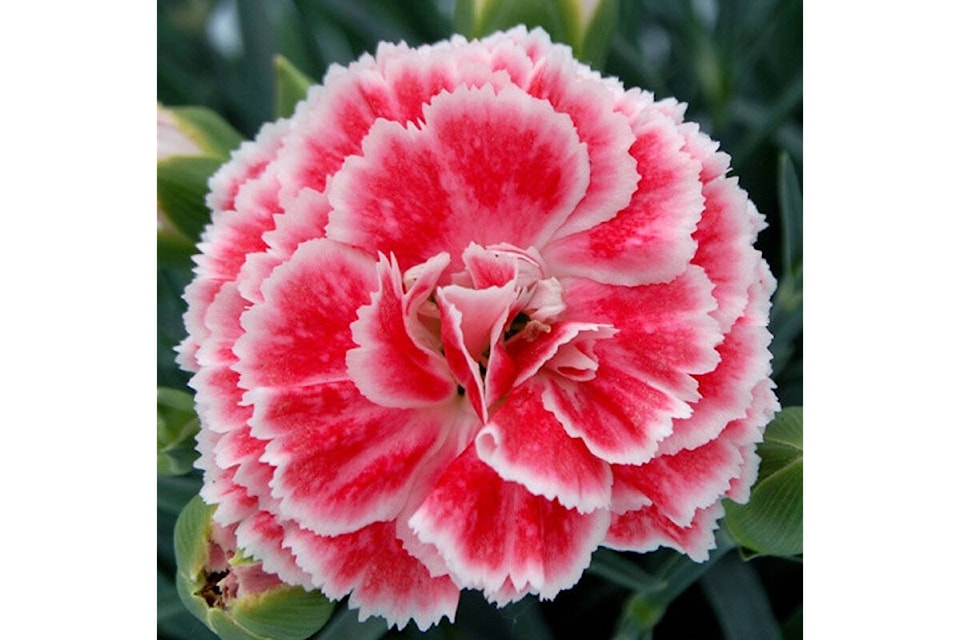By Ellen Presley
Special to the Record
As we approach Mother’s Day, the official flower is the carnation (Dianthus caryophyllus).
There are more than 300 species of Dianthus that fall into categories of annual, biennial or perennial. They originated in the Mediterranean region, have been revered for over 2,000 years and exchanged between lovers for centuries.
The word Dianthus comes from the Greek words ‘dios’ and ‘athanos’ which translates into ‘Flowers of the God.’ They have a beguiling clove fragrance that has been used in expensive perfumes and the clove-cinnamon taste of the petals is used as an ingredient in the renowned French liqueur chartreuse made by the Carthusian Monks since the 17th century. (It is used in the food industry, but be careful of the variety as not all are edible, and if bought commercially is often sprayed with chemicals.)
In the Victorian era, women were said to respond to a secret admirer with a carnation: if it was a solid colour it meant ‘Yes’, a striped flower meant ‘unfortunately no’ and a yellow meant definitely ‘No.’ To this day it is still a symbol of love, happiness, togetherness and even fascination.
As a plant, they last a long time both in the garden and as a cut flower. They are easy to grow with sunlight, good drainage and deadheading to encourage repeat blooms throughout the summer. They are excellent pollinators attracting bees, butterflies and hummingbirds. Dianthus are deer- and rabbit-resistant, drought-tolerant and salt-resistant, making them amazing plants for the seaside garden.
Because carnations are so easy to grow, as well as their endurance as a cut flower, and their beauty and fragrance, they became a favourite of corner grocery stores and supermarkets. Their long shelf life allowed stores to always make them readily available to the public at an affordable price. Unfortunately, this led to their much-maligned reputation as a ‘cheap’ flower - now people either love them or hate them.
As a gardener, I love them. They are so reliable, great for the border or in containers and their sweet scent is delightful wafting in the air during the hot summer months.
There are amazing new perennial varieties on the market that add cheerful colour to the sunny border or containers.
The Everlast series is ‘tough as nails’, grows 8-12” and is an excellent performer in the garden. ‘Everlast Cherry Swirl’ has red and white blooms, ‘Everlast Burgundy Blush’ has ruby-red flowers with frilly hot pink margins, and ‘Everlast Orchid’ has gorgeous hot pink flowers, all with narrow blue-green foliage. They start blooming in spring and continue through the summer until fall and are both fragrant and floriferous.
The award-winning Scent First variety is a compact plant at 6-10” and hails from England. ‘Scent First Passion’ has a double flower of bright cherry red and ‘Scent First Coral Reef’ has frilly deep coral petals with a white picotee edge.
Great for the edge of the border, they produce a low cushion of grassy grey-blue foliage topped with gorgeous flowers.
The Premium ‘Hello Yellow’(8-11“) has unique soft yellow double blooms, and Devon Cottage ‘Pin Ball Wizard’ (9-12”) has double flowers with each petal displaying a dazzling explosion of pink and white.
They are all in bloom now at our Nursery and each one a delight to behold. A perfect gift for that special someone. Happy Gardening!
Ellen Presley is the owner of Anderton Nursery, at 2012 Anderton Rd., Comox. Visit andertonnursery.ca
